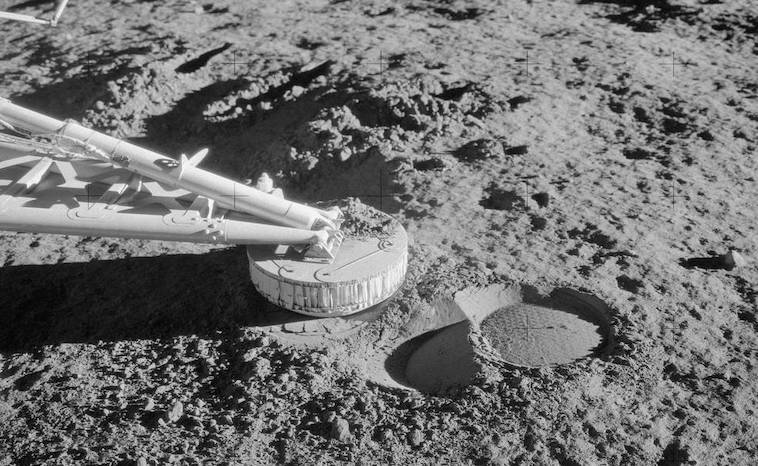Mondstaub von Raumanzügen entfernen

Der Staub auf dem Mond stellt eine ernsthafte Bedrohung für Raumanzüge und andere Rauminstrumente der Astronauten dar. Lies weiter, um mehr über die neue NASA-Technologie zu erfahren, die die Sicherheit von Astronauten erhöht.
Moon dust sticks to everything, and when it does, it causes big problems. Tiny grains of sand form moon dust . They were formed over millions of years by meteorite impacts. These impacts repeatedly crushed and melted rocks, producing tiny shards of glass and mineral fragments. Not only do they attach themselves to everything, but they also move at incredibly high speeds. In addition, they are electrostatically charged.
Moon Dust Solutions
How does NASA plan to solve this problem for the upcoming Artemis space exploration program by 2028? Scientists have found that a special coating designed for satellites on the International Space Station may be suitable for spacesuits. Goddard technologists Vivek Dwivedi and Mark Hasegawa have developed a coating that can break down electrical charges that can destroy spacecraft electronics. (NASA 2019) These electrical charges occur when spacecraft fly through plasma found in Earth’s magnetosphere. In addition, plasma contains trapped charged particles that conduct electricity and contribute to the buildup.
Hasegawa’s idea was to use an advanced technology called atomic layer deposition. The idea is to attach super-thin films of indium tin oxide.
Originally, this coating was intended to shield the electronics of spacecraft as they flew through conductive plasma clouds in Earth’s magnetosphere. Indium tin oxide acts as an active ingredient to remove electrical charges from dry color pigments. As a result, the paint could then be applied to radiators and other spacecraft components to prevent the creation of electrical charges.

Prevent the adhesion of moon dust
NASA researchers tested the special coating on a sample in a reactor chamber. The chamber contains different types of gases to create an ultra-thin film. These layers are very thin, only about as thick as a single atom. After applying them, they found that the electrically charged particles did not stick to the sample.
As a result, scientists sent wafers to the International Space Station and exposed them to solar plasma. NASA can successfully apply the paint to spacesuits and other three-dimensional objects for lunar exploration.
Electrically charged particles (lunar dust) vary depending on their location on the lunar surface. On the lunar side, the unshielded ultraviolet radiation from the sun affects the electrons. For example, the dust particles in the upper layers of the lunar soil give the surface of each dust particle a net positive charge. On the dark side of the moon and at the poles, however, things are different. Plasma escaping from the sun charges the lunar surface but deposits electrons, creating a net negative charge. Where the dark side meets the light side, the electrical charges become stronger. For this reason, NASA hopes its electric color will help with lunar exploration and development.
According to NASA, they also want to create the technology to create conductive skin materials. Discovering a paint that could reduce the electrical charges would be amazing for both NASA and the private sector. In a few years, we may see something that can improve our lives. However, the safety of the astronauts and lunar probes is of utmost importance. We hope the paint works for the space program.
